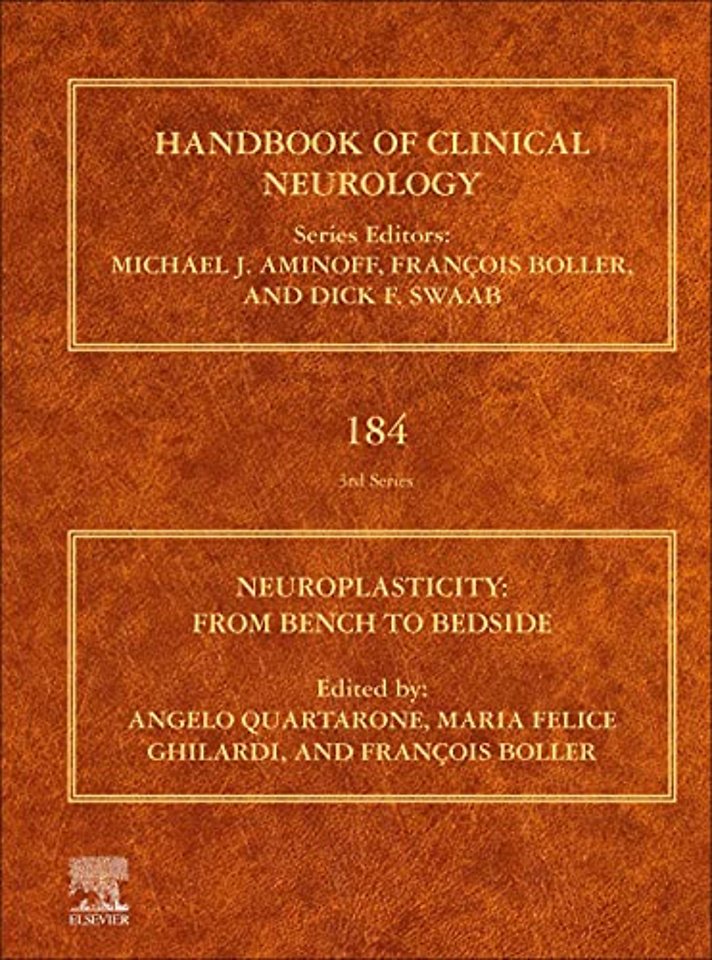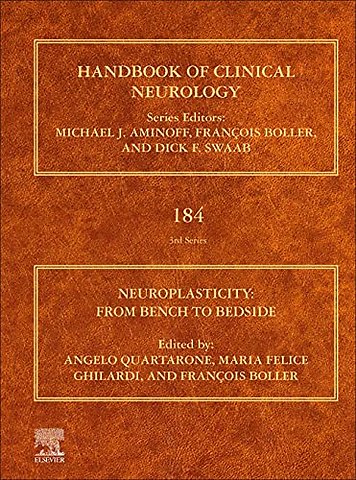Section I. Introduction<br>1. Defining neuroplasticity<br><br>Section II. Neuroplasticity: Basic Mechanism and Assessment at System Level<br>2. Basic mechanisms of plasticity and learning<br>3. Local sleep: a new concept in brain plasticity<br>4. Sleep and homeostatic control of plasticity<br>5. Transcranial magnetic stimulation as a tool to induce and explore plasticity in humans<br>6. EEG as marker of brain plasticity in clinical applications<br>7. Tools to explore neuroplasticity in humans: Combining interventional neurophysiology with functional and structural magnetic resonance imaging and spectroscopy<br>8. Metabolic imaging and plasticity<br><br>Section III. Neuroplasticity in Movement Disorders<br>9. Parkinson’s disease: Alterations of motor plasticity and motor learning<br>10. Alpha-synuclein and cortico-striatal plasticity in animal models of Parkinson disease<br>11. Plasticity, genetics, and epigenetics in L-DOPA-induced dyskinesias<br>12. Non-invasive neuromodulation in Parkinson's disease: Neuroplasticity implication and therapeutic perspectives<br>13. Plasticity, genetics and epigenetics in dystonia: An update<br>14. Neuroplasticity in dystonia: Motor symptoms and beyond<br><br>Section IV. Brain Oscillations in Neurological Disorders<br>15. General principles of brain electromagnetic rhythmic oscillations and implications for neuroplasticity<br>16. Noninvasive brain stimulation and brain oscillations<br>17. Brain oscillatory dysfunctions in dystonia<br>18. Brain oscillations and Parkinson disease<br>19. Adaptive deep brain stimulation: Retuning Parkinson's disease<br><br>Section V. Plasticity and Rehabilitation<br>20. Biomarkers of plasticity for stroke recovery<br>21. New tools for shaping plasticity to enhance recovery after stroke<br>22. Neuroplasticity of spinal cord injury and repair<br>23. Reward and plasticity: Implications for neurorehabilitation<br>24. Rehabilitation in movement disorders: From basic mechanisms to clinical strategies<br>25. Rehabilitation of visual perception in cortical blindness<br>26. The role of plasticity in the recovery of consciousness<br>27. Plasticity of the language system in children and adults<br><br>Section VI. Inflammation, Autoimmunity, and Plasticity<br>28. Synaptic dysfunction in early phases of Alzheimer's disease<br>29. T-cells, alpha-synuclein, and Parkinson disease<br>30. Multiple Sclerosis: Inflammation, autoimmunity and plasticity<br><br>Section VII. Plasticity in Cognitive and Psychiatric Disorders<br>31. Alzheimer disease and neuroplasticity<br>32. From chronic stress and anxiety to neurodegeneration: Focus on neuromodulation of the axon initial segment<br>33. Shaping plasticity with non-invasive brain stimulation in the treatment of psychiatric disorders: Present and future

